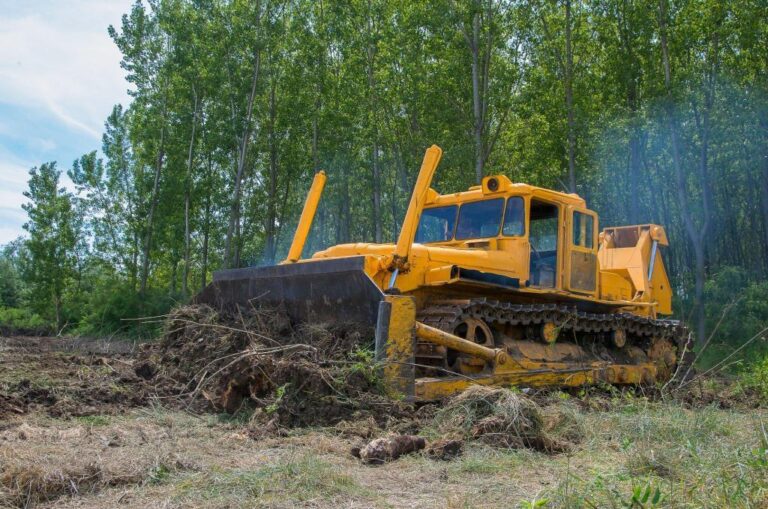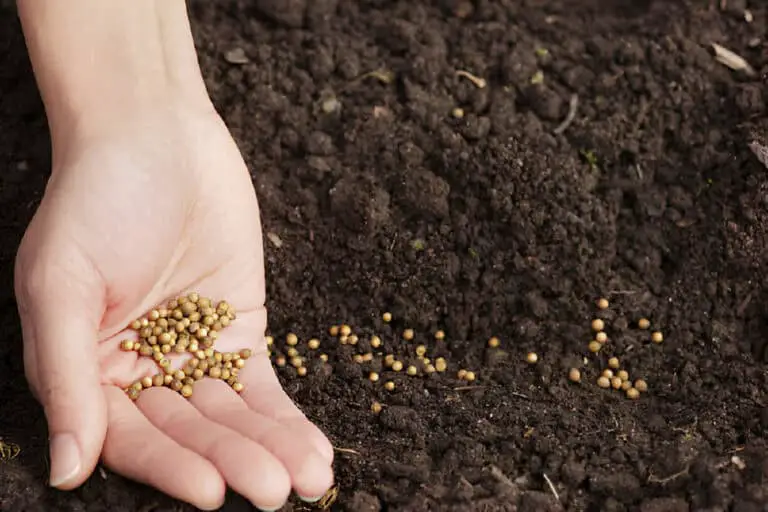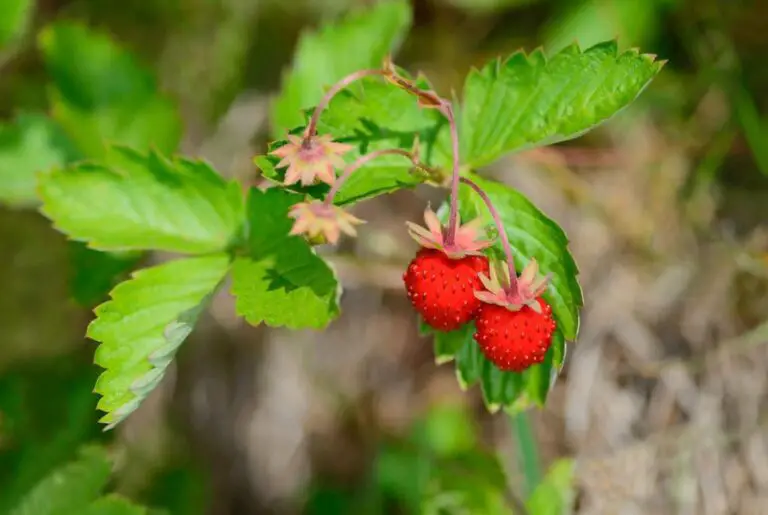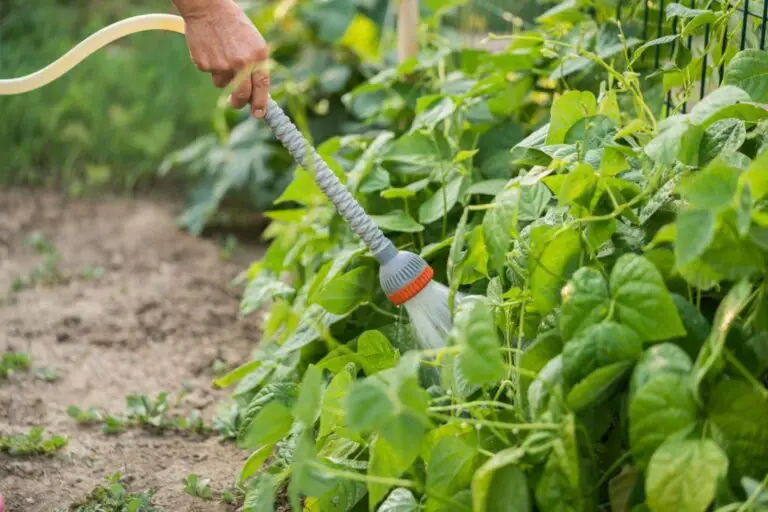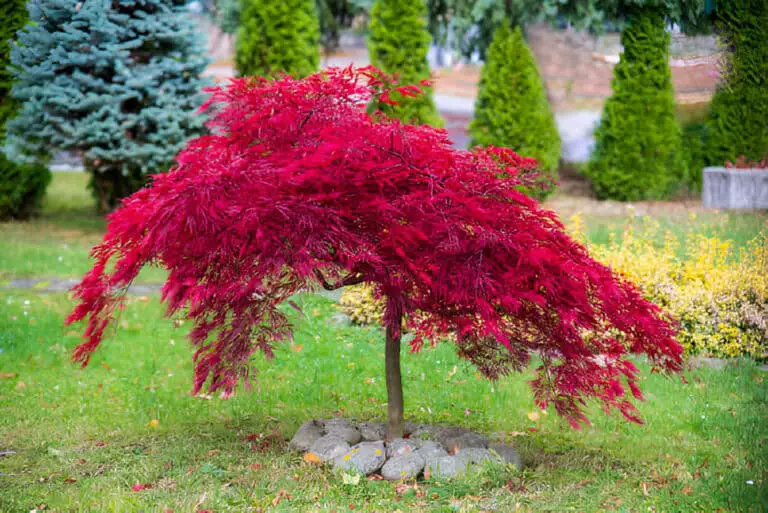Can Potatoes Grow in Light Partial Shade Sunlight Area? (Facts You Should Know)
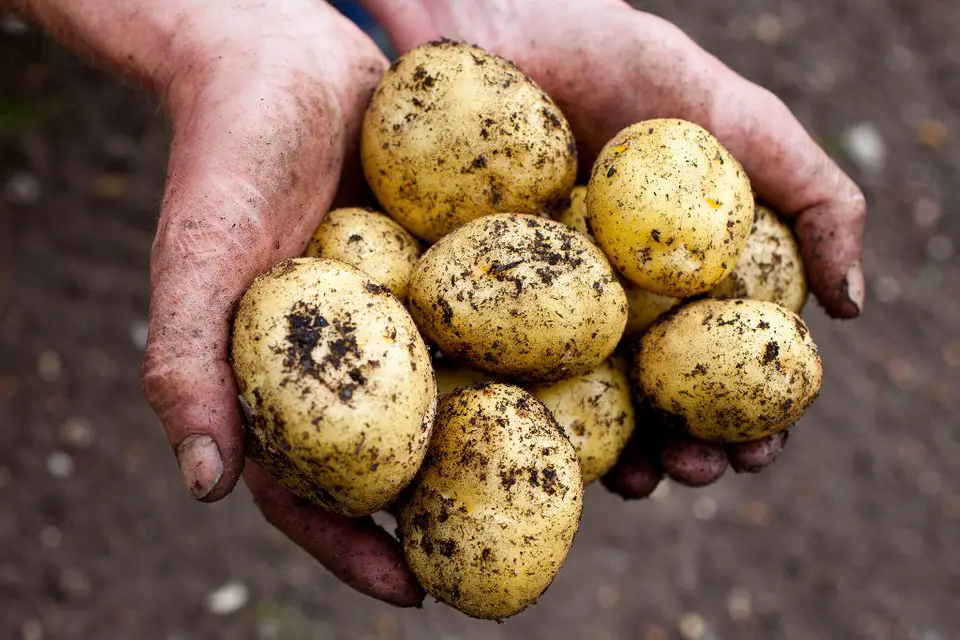
Potatoes are a nutritious and adaptable crop that you can grow in your own garden or farm. They are easy to grow and do not need much attention. While potatoes can thrive in cool areas and even endure some frost, they do need sunlight to a certain degree. But can potatoes grow in light, partial shade?
Naturally, not every portion of the potato plant requires lots of light. Of course, leaves need the most sunlight for photosynthesis. The tubers, on the other hand, are better not exposed to sunlight. They will change color and become toxic if they get a lot of sunlight.
The maturation duration of potatoes from sowing until harvesting can range from 75 to 120 days. The duration and quantity of sunlight might fluctuate throughout that time. Potatoes require six hours of direct sunlight every day for optimum growth.
In this post, we’ll discuss the effects of light and shade on potato plants. Additionally, we’ll discuss how to shade potato plants without limiting their growth. This is to make sure that you will get plenty of large potatoes this year.
Can Potatoes Grow In Shade or Partial Sunlight?
Is it possible to grow potatoes in the shade? Yes, potatoes may still grow and thrive in part-shade conditions. They require a minimum of 6 hours of sun every day to grow more tubers of larger size. Surely you can grow potatoes in a partially or fully shaded area. But this may not grow tubers at all, or if they do, they will be small tubers.
After the green growth (shoots) of potato plants break the surface of the soil, too much shadow will prevent the plants from establishing a healthy root system.
Do Potatoes Sprout In Light Or Dark?
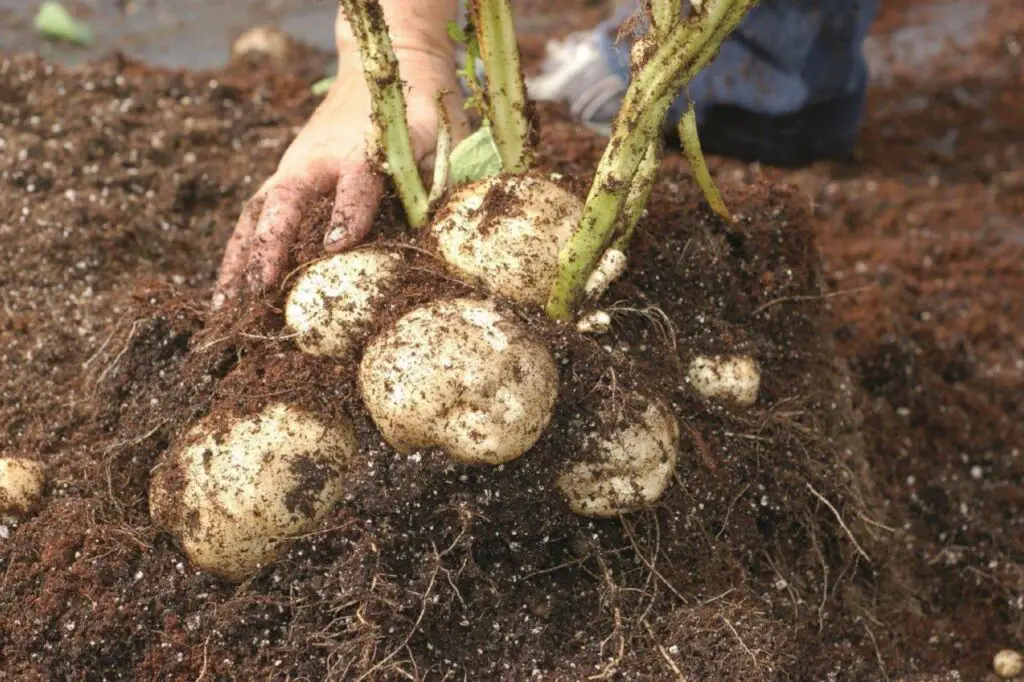
Potatoes may grow in the shade or in total darkness. This is, in fact, their preferred way of sprouting.
It’s possible that the tubers will grow at different times. Please be patient, as some conditions may cause certain tubers to grow at various times.
They had sprouted some white roots and green shoots from the soil’s surface thanks to the subsurface tubers! In this scenario, it would be preferable if you pulled them out and moved them to a different section of the garden where they might join different batches’ potato plants.
If you want to speed up the sprouting of potatoes, just leave them out in the sun. A temperature of 70 degrees Fahrenheit (or 21 degrees Celsius) is optimum for growing “green sprout” potatoes.
You don’t want to stack the potatoes. Lay them out, one on top of the other. For sprouting potatoes, it’s better to grow them in a place with a lot of humidity or water.
Avoid cold conditions at all costs, since they will destroy the sprouts and compel you to start again! You must avoid cold conditions at all costs, as this will damage the sprouts and cause failed harvesting!
Others Plants That Can Grow In Partial Shade Area
Vegetables that grow in the ground, like beets, carrots, and potatoes, will thrive in slightly shaded areas that receive less direct sunlight. The ideal conditions for growing in a shaded area are at least half a day of full sun and some partial shade. Chard, spinach, and salad greens are among the most shade-tolerant vegetables.
It’s also important to know which plants can grow without sunlight. These veggies can thrive in the shadow, although not totally without the sunlight:
- Beets.
- Arugula.
- Carrots.
- Broccoli.
- Cabbage.
- Cauliflower.
- Brussel Sprouts.
- Swiss Chard.
Requirements for Growing Potatoes
The following conditions must be met in order to cultivate good potatoes:
- People who grow potatoes need soil that is rich and fertile. The soil should also be loose and easy to work with. The ideal pH is between 5.5 and 6.
- It is important to have well-drained soil; moist soil increases the likelihood of rot.
- During the growing season, give the plants enough water. When the tops die down, stop watering.
- For optimal results, maintain your potato patch weed-free.
- Potatoes should be cycled around the garden, never being planted in the same area for more than three to four years.
Potatoes Planting Requirements: Timing
Planting potatoes at the incorrect time might result in a shorter harvest since the potatoes will not have enough time to grow or will suffer in the heat.
Potatoes are a cool-season vegetable that can be grown in any USDA zone. In the coldest areas, late frost protection is required, whereas desert farmers should plant in the winter to preserve their plants from severe heat.
Spring and Fall Seasons for Growing Potatoes
While the days are shorter in the winter, the quantity of sunlight in the spring and fall is nearly equal during the growth season. The time is different, though: in the spring, daylight length rises, but in the fall, it decreases. When the days start to become shorter, it’s critical to time fall plantings so that the potatoes are over the period of vegetative development.
Potatoes Planting Requirements: Soil
One of the most important variables in producing potatoes properly is the quality of your soil. Potatoes require a lot of nutrients to grow tubers. They like a somewhat acidic, humus-rich soil that is loose and friable.
To avoid fungal infections and decay, proper drainage is essential. Sandy loam is best, but you may add aged manure, coarse builder’s sand, well-rotted leaves, organic compost, and other amendments like kelp to clay or sandy soil.
Is Summer Sunlight Good For Potatoes?
The summer sun is rarely an issue while producing potatoes, unless you farm in a location where large trees cast shadows on the garden. Heat may be a major concern in the summer. Potatoes thrive at temperatures between 65 and 70 degrees Fahrenheit (18 and 21 degrees Celsius). If you have to grow potatoes in the heat of the year, try to give them some afternoon shade.
Sunlight and Latitude
Summer days in northern places are often longer, which means potatoes should get more than enough sun. They frequently have the chilly temperatures that potatoes require.
However, their growing seasons are shorter. In a country like Alaska, the quantity of sunshine your potatoes receive may be less of a concern than the need to harvest them first before the ground freezes again.
Solanine and Sunlight
While potatoes need sunlight to develop, uncovered tubers turn green and are no longer edible. There is a toxin in solanine, which is common in the nightshade family, which is where potatoes belong.
The light helps solanine grow. This happens when rain washes away soil from tubers that are close to the surface of the ground. Potatoes are usually in the sun when this happens. Additionally, they can become green when exposed to artificial lights, such as those in a grocery store, for an extended period of time.
If ingested in large numbers, this drug can make individuals unwell and perhaps kill them.
To avoid greening and solanine growth, hill your potatoes at least once or twice while they’re growing by covering them with dirt or mulch.
Growing Potatoes in Shady Areas
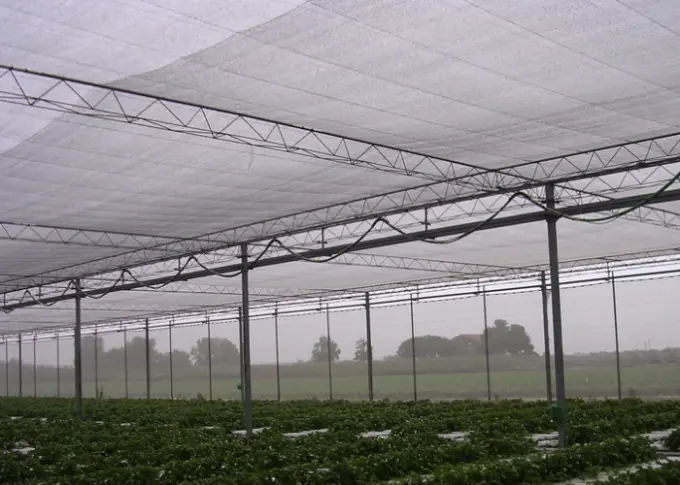
While it may seem like a magical solution for utilizing every nook and cranny of your garden, there are a few challenges that can arise when cultivating potatoes in less-than-optimal light conditions. So, let’s delve into the shadows and uncover the potential problems that may lurk beneath the surface.
- Reduced vigor and growth rate: Potatoes thrive in sunlight and may struggle to generate sufficient energy for robust growth in shaded areas. This can lead to weak, leggy stems and hinder the plant’s ability to produce a bountiful harvest.
- Increased susceptibility to diseases: Shaded environments can create a more humid and less ventilated atmosphere, making potatoes more prone to fungal infections such as late blight or powdery mildew. Proper monitoring and proactive measures are essential to prevent or mitigate these diseases.
- Pest infestations: Shade can provide a sheltered environment for pests like aphids and slugs, which can wreak havoc on potato plants. Regular monitoring and appropriate pest control methods are necessary to prevent damage.
- Reduced yield and tuber size: Limited sunlight availability can impact the photosynthesis process, resulting in smaller and less abundant tubers. Potatoes may not grow in full if not getting direct sun. While the overall yield and size may be reduced, the taste and quality of the potatoes can still be excellent.
- Competition for resources: Other plants, such as trees or larger shrubs, in shaded areas may compete for water, nutrients, and space, which can hinder potato growth. Adequate irrigation, nutrient-rich soil, and strategic planting can help address this issue.
Should I Adjust Watering or Fertilization for Potatoes in Shaded Areas?
When it comes to watering and fertilization, the shaded environment adds a layer of nuance to the care and attention required for these magnificent tubers. Let’s explore whether adjustments to watering and fertilization practices are necessary to ensure their flourishing growth and bountiful harvest.
When it comes to watering potatoes in shaded areas, a cautious approach is key. The reduced exposure to direct sunlight means that the soil in shaded patches tends to retain moisture for longer periods. This can create a more humid environment that is less prone to evaporation. Therefore, it’s crucial to monitor the moisture levels in the soil diligently. Rather than adhering to a strict watering schedule, focus on the actual needs of your potato plants.
Start by assessing the soil moisture with your fingertips. Stick them into the soil, about an inch or so deep. If it feels constantly moist, hold off on watering and allow the soil to dry out slightly before the next irrigation.
Overwatering can lead to waterlogged soil, which can cause root rot and hinder the plant’s growth. On the other hand, if the soil feels dry, provide a thorough watering to ensure the roots receive adequate hydration. The key is to strike a balance that prevents both excessive moisture and drought stress.
In terms of fertilization, shaded areas may require some adjustments compared to sun-drenched potato patches. Since shaded environments receive less sunlight, the overall growth rate of the potato plants may be slower.
Consequently, the nutrient requirements of the plants may be slightly different. Rather than providing a heavy dose of fertilizer, it’s advisable to focus on maintaining a well-balanced soil environment.
How Long Does It Take for Potatoes To Mature in Light Partial Shade?
The time it takes for potatoes to mature in these shady areas can vary depending on a number of factors, creating a unique picture of the potato’s growth and development. So, let’s explore the tapestry of time in the shade and uncover the secrets of potato maturation.
In light, partial shade, the potato’s journey from planting to harvest can be a touch more leisurely compared to its sun-bathed companions. The reduced availability of sunlight slows down the overall growth rate, affecting the accumulation of energy within the plant. As a result, the developmental milestones of potatoes can stretch their limbs a bit longer, gently dancing to the tune of the shaded environment.
On average, potatoes grown in partial shade may take a bit more time to mature compared to those basking in full sun. Although there is no set deadline, it is not uncommon for the maturation process to take a few extra weeks or even longer. The additional time allows the potato plant to compensate for the limited light by gradually gathering the necessary resources to form those luscious tubers underground.
However, it’s essential to note that the specific duration of potato maturation in light, partial shade can vary depending on various factors. The shade intensity and duration, temperature, soil quality, and the potato variety itself all play their part in shaping the timeline. These factors intertwine, creating a unique symphony that influences the growth pace and ultimately determines when the potatoes will reach maturity.
It’s worth mentioning that while the maturation process may take a tad longer in partial shade, the flavor and quality of the potatoes can be exquisite. The extended journey allows the tubers to develop their unique character, resulting in a more nuanced taste and texture. So, while we wait a little longer for our shade-kissed potatoes to ripen, we can rest assured that the culinary rewards will be well worth the patience.
Best Potato Varieties for Shady Areas
When it comes to cultivating potatoes in partial shade, selecting the right variety is crucial. Just like fashionistas carefully choose the perfect outfit for each occasion, gardeners must be equally discerning in their choice of potato variety. So, let’s explore the runway of potato fashion and uncover the best spud stars that thrive in shady areas!
1. Yukon Gold
One variety that stands out is the Yukon Gold. With its golden flesh and buttery flavor, this potato is a culinary superstar. But what sets it apart is its adaptability to different light conditions. Yukon Gold potatoes possess the remarkable ability to tolerate light, partial shade without compromising their growth and yield. So, if you’ve got a shady nook in your garden, fear not! These golden wonders will flourish in the dappled sunlight, bringing a touch of elegance to your potato patch.
2. Red Norland
Next up on the shade-friendly potato catwalk is the Red Norland. With its vibrant red skin and creamy white flesh, this variety not only adds a pop of color to your culinary creations but also thrives in areas with less direct sunlight. Red Norland potatoes have shown resilience in shaded environments, displaying vigorous growth and producing bountiful harvests. So, if you’re dreaming of a shady potato paradise, the Red Norland is your go-to option.
3. Kennebec
Ah, and let’s not forget the remarkable Kennebec variety, a true champion of the spud world. With its smooth, light tan skin and firm texture, the Kennebec potato is a beloved choice for both gardeners and chefs. And guess what? This versatile potato can adapt to different light conditions, including light partial shade. It doesn’t mind sharing its stage with a few shadows; in fact, it thrives in them. So, if you’re seeking a shade-tolerant potato with impeccable taste and texture, look no further than the Kennebec.
4. Russet Burbank.
Last but certainly not least, we have the Russet Burbank, a heavyweight contender renowned for its starchy, fluffy texture. While it’s true that Russet Burbank potatoes are commonly associated with sunny Idaho fields, they also possess surprising shade tolerance. These potatoes can tolerate light partial shade, making them a worthy addition to your shady garden sanctuary. Imagine the joy of harvesting these iconic spuds, even in the gentle embrace of dappled sunlight.
Can Potatoes Be Grown Indoors?
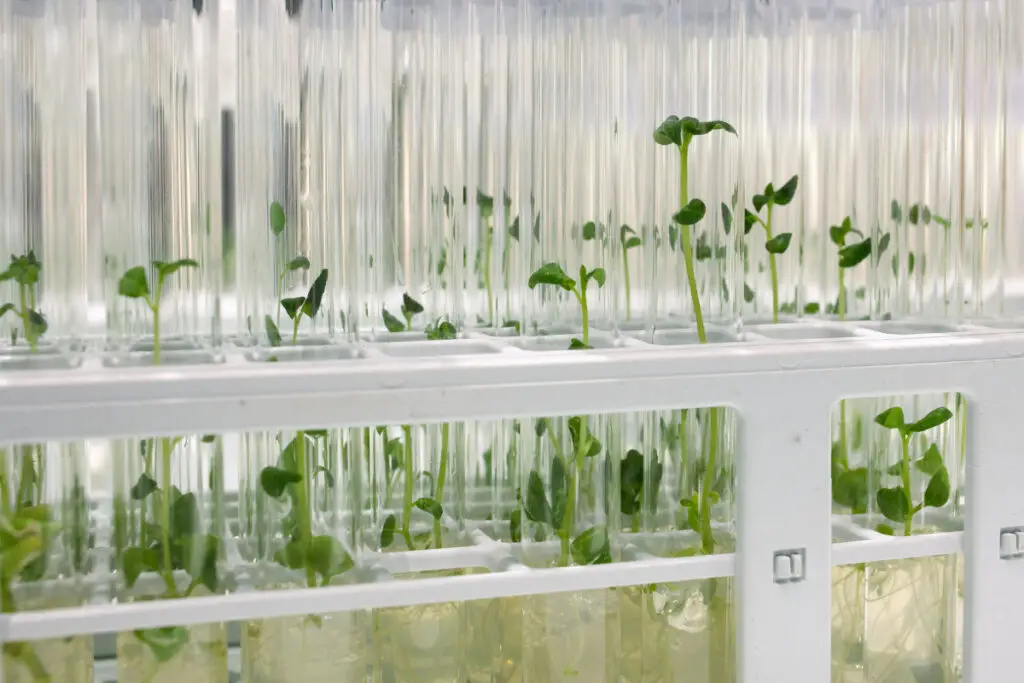
Potatoes are one of the simplest crops to cultivate, and yes, they can be grown indoors. Potatoes can be grown in almost any area or container, as long as you provide for their basic needs.
To plant your potatoes indoors, you can use a plastic bucket, a gardening pot, or perhaps a fertilizer bag. To get the most out of your container, make sure it has at least a 2.5 gallon capacity.
You may also grow potatoes in a bag of dirt if you don’t even have a container that meets these requirements.
You’ll need to provide light to the plants regardless of what you’re growing potatoes in. For every hour of additional sunshine, the plants will require two hours below the grow light.
Your potato plants should thrive if you can provide good soil, a well-draining container, and adequate lighting.
Growing potatoes indoors is a simple process that may result in a beautiful crop if the plants are properly cared for.
Can I Mix Sun-Loving and Shade-Tolerant Potato Varieties in the Same Area?
Growing your own food is a rewarding endeavor, especially when it comes to cultivating a diverse range of vegetables in your garden. But what if you have a mixed environment where some areas receive full sun while others are tucked away in the cool embrace of shade? Specifically, can you mix sun-loving and shade-tolerant potato varieties in the same area? Let’s delve into this intriguing question and explore the possibilities.
In a shade garden where full shade prevails, it’s essential to choose potato varieties that can thrive in such conditions. While potatoes generally grow best in full sun areas, there are indeed shade-tolerant varieties available. These remarkable spuds possess the ability to adapt to lower light levels, allowing you to explore the potential of growing potatoes even in a shady spot.
When mixing sun-loving and shade-tolerant potato varieties, it’s crucial to consider the amount of sunlight the plants receive throughout the growing season. The sun-loving varieties should be planted in the areas of your garden that receive the most sun, ensuring they receive the necessary light to grow and flourish. These varieties will benefit from the bountiful sunshine and produce robust foliage and ample tubers.
On the other hand, the shade-tolerant potato varieties can be reserved for the areas that experience light shade or dappled sunlight. These resilient cultivars have adapted to lower light levels and can successfully grow in partially shaded conditions. Placing them strategically in areas where they can receive some sun, even if it’s filtered or indirect, will still provide them with enough energy to develop healthy foliage and yield decent tubers.
By mixing these different potato varieties, you can maximize your garden’s potential and make the most of the available growing space. It’s like creating a harmonious symphony where each variety finds its place, soaking up the appropriate amount of sunlight to thrive. This method allows you to utilize every nook and cranny of your garden, transforming it into a vibrant and productive haven.
Imagine the sight: the sun-loving potatoes stretching their leaves toward the bright rays of the sun, basking in its warmth, while the shade-tolerant ones embrace the gentle shade cast by nearby trees, their resilient nature adapting to their environment. Together, they form a mosaic of greenery, showcasing the versatility of nature and your gardening prowess.
However, it’s important to keep in mind that even shade-tolerant potato varieties do require some sunlight to grow. While they can handle lower light levels, it’s still essential to ensure they receive a few hours of direct or filtered sunlight each day. This will provide them with the necessary energy to photosynthesis and produce the sugars needed for robust growth and tuber formation.
Ultimately, the success of mixing sun-loving and shade-tolerant potato varieties depends on finding the right balance between sunlight availability and the specific needs of each variety. With careful planning and thoughtful placement, you can create a thriving potato garden that utilizes both full sun and shaded areas, maximizing your yield and delighting in the joy of growing your own food.

